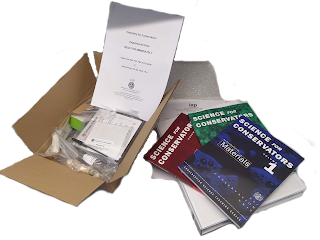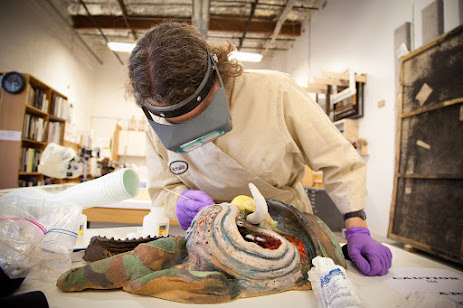Domestic Digitising Doings 07: Scanning Without A Scanner
Apologies, the blog’s gone by the wayside a bit lately, what with most of my time being taken up with my day job managing the redevelopment of Glencoe Folk Museum in the Highlands. There are a few articles in preparation, including a series on the Chemistry for Conservators course I completed earlier this year, but in the meantime here’s a placeholder quickie returning to one of my favourite topics – digitising film negatives.
 |
| Walk towards the light! Or rather, don't as you'll knock the light off the table ya clumsy get. |
STILL ON ABOUT SCANNING 😒
As a break from digitising my own family’s archive (9,000
scans and counting…) my good lady recently unearthed a small batch of her
family photos taken in the early 1980s. I was intrigued by these because it
took a while to recognise the film format. It turned out to be Kodak 126 film
(the 126 deriving from the images being 26.5mm square) This was introduced in 1963
in cartridge form, a more user-friendly way of loading a camera than the regular roll film. Combined with Kodak’s range of inexpensive ‘Instamatic’ cameras,
this made colour photography widely accessible to non-photographers for the
first time. I've a feeling as a youngster I had an old Instamatic to play with, though it certainly never had a film in it. Anyway.
Kodak stopped producing 126 film in 1999 though the format does still
have a small but loyal following among, well, masochists presumably.
The immediate distinguishing features of 126 film are the
square image and single perforation per exposure. Another notable feature is
this format does not fit in any of the transparency holders for my photo
scanner. Blast.
Adapters for 126 film are available, but being an impatient
so-and-so I wanted to see what could be done to scan these negatives without,
erm, a scanner. I’ve seen several adverts for mobile phone software which promises
excellent results digitising negatives by holding them up to a bright light
source and snapping a photo with your ‘phone, but (and it must be said that I
haven’t actually tried this) I don’t really rate this as a good quality option.
Still, there might be a germ of an idea there…
I hastily improvised my own scanner-less digitising suite
with the light table (usually used for sorting negatives) and my Canon 70D DSLR
mounted on its tripod. After blocking out the rest of the light from the room I
quickly snapped away through the packet and ended up with…
 |
| It's hip to be a (26.5mm) square. |
…which frankly didn’t turn out as badly as I’d feared.
After running the images through Lightroom to invert the negatives and perform some rudimentary colour-balancing, a typical result looked something like this.
Not great, not terrible – there’s a reasonable amount of detail present and the colours could be recovered fairly well. They aren’t the best quality negatives to begin with, though I’ll be keen to make a proper quality comparison once a 126 negative holder for the scanner can be obtained. While I was very impressed with the speed at which a whole packet of photos could be digitised – much faster than working individually through the scanner - the amount of time spent post-processing the photos for a lower-quality ultimate result more than negates the initial speed advantage!



Comments
Post a Comment